The Digital Transformation Paradox: How Technology is Simultaneously Democratizing and Fragmenting the Creative Economy
August 15, 2025
Why $1.4 Trillion in Creative Services Can't Help 98% of Artists Earn a Living Wage
Abstract
The global creative economy has undergone its most profound transformation since the industrial revolution. While technology has created unprecedented opportunities—driving creative services to $1.4 trillion annually—it has simultaneously generated new forms of exclusion and inequality. This comprehensive analysis examines the paradox of digital transformation in creative industries: how the same technologies that democratize access to global markets also create algorithmic gatekeepers, economic disparities, and cultural homogenization. Through analysis of platform economics, creator monetization patterns, and emerging hybrid business models, this study reveals why the future of creative industries lies not in choosing between digital and traditional approaches, but in strategic integration that amplifies human creativity rather than replacing it.
Introduction: The Great Creative Paradox
The promise was simple: digital technology would democratize creativity, eliminate traditional gatekeepers, and provide equal opportunities for artistic expression and commercial success. The reality has proven far more complex. While creative services exports have exploded to $1.4 trillion globally—a 29% surge in just five years—only 2% of creators earn livable wages from digital platforms.
This paradox represents more than statistical contradiction; it reveals fundamental tensions between technological capability and human economic reality, between global connectivity and local infrastructure, between algorithmic efficiency and artistic integrity. Understanding these tensions is crucial for navigating the creative economy's future.
Part I: The $1.4 Trillion Revolution That Changed Everything
The Scale of Digital Transformation
The numbers behind the digital creative revolution are staggering. Creative services exports reached $1.4 trillion in 2022, with software services alone comprising 41.3% of all creative exports. Music streaming captured 67.3% of global music revenue, while developing countries doubled their market share from 10% to 20% of global creative services.
This transformation extends beyond traditional creative sectors. Video games now collaborate across film, music, and fashion industries. AI generates 41% of newsroom art and 39% of social media content. The boundaries between creator, curator, and consumer have blurred beyond recognition.
Platform Economics and the Creator Goldmine
Digital platforms have created entirely new economic models for creative work. The NFT market reached $2.7 billion in 2024, providing artists direct access to collectors. Virtual galleries experienced 300% growth in immersive art experiences. Fan subscription platforms like Patreon enable creators to earn average monthly incomes of $180, compared to $0.003 per stream on traditional platforms.
These new models bypass traditional intermediaries—galleries taking 50% commissions, record labels controlling distribution, publishers gatekeeping content. For the first time in history, creators can build direct relationships with audiences and monetize their work without institutional approval.
The Geographic Democratization
Perhaps most significantly, digital transformation has enabled developing countries to compete in creative markets previously dominated by Western economies. Countries like India, Nigeria, and UAE are producing content that bypasses traditional Western gatekeepers entirely, reaching global audiences through digital platforms.
This geographic shift represents more than economic opportunity; it's cultural democratization. Stories, aesthetics, and perspectives previously marginalized by traditional media systems now find global audiences. The creative economy is becoming truly global rather than Western-centric.
Part II: The Darker Side of Digital Democracy
The 2% Reality: Why Most Creators Still Struggle
Despite the $104 billion creator economy, only 2% of creators earn livable wages. This statistic reveals the gap between platform promises and creator reality. While digital tools eliminated traditional barriers, they created new ones: algorithm favoritism, platform dependency, and winner-take-all dynamics.
The average creator earns £2.60 per hour—below minimum wage in developed countries. 62.3% of creators struggle to align content production with monetization strategies. The platforms that promised to democratize creativity have created their own forms of exclusion.
Algorithmic Gatekeepers: The New Tastemakers
Traditional gatekeepers—museum curators, gallery owners, record label executives—have been replaced by algorithms optimized for engagement rather than artistic merit. Only 18% of an artist's followers see their posts organically on Instagram. The first 30 minutes after posting determine whether content goes viral or vanishes.
This system favors content creators over fine artists. Process videos outperform finished pieces. Fifteen-second time-lapses receive more engagement than contemplative gallery experiences. Artists adapt their work to platform preferences rather than artistic vision, creating aesthetic homogenization despite promises of diversity.
Infrastructure Inequality: The Digital Divide Deepens
While new monetization models flourish in developed markets, infrastructure gaps prevent billions from participating. 58% of global creators lack stable internet for consistent monetization. Infrastructure costs consume 40% of emerging market creative income. Currency conversion fees eat 15-25% of international sales.
The geographic divide is particularly stark. Silicon Valley creators access venture funding and advanced tools, while GCC artists navigate complex licensing procedures and inconsistent payment systems. The same technology that democratizes also excludes, creating new forms of global inequality.
Platform Dependency: The New Precarity
Digital creators face unprecedented economic precarity. Algorithm changes can destroy income overnight. Platform policy shifts can eliminate revenue streams. Creators building audiences on social media own no direct relationship with their followers—platforms control all access.
This dependency extends beyond individual creators to entire creative ecosystems. Galleries increasingly rely on social media for discovery and sales. Musicians depend on streaming platforms for distribution. Visual artists need Instagram for visibility. Platform decisions affect millions of creative livelihoods with no democratic input or appeal process.
Part III: The Hybrid Solution—Technology Amplifying Human Creativity
The Artisan Renaissance in the Digital Age
Paradoxically, the digital age has sparked a renaissance in traditional craftsmanship. 76% of consumers under 35 pay premium prices for handcrafted items. The luxury goods market reached $390 billion in 2024, with artisan crafts driving unprecedented growth at 6.8% CAGR.
This trend reflects more than nostalgia; it represents recognition of human skills that remain irreplaceable. Each brushstroke carries unique pressure and technique. Imperfection becomes beauty in a perfect digital world. Physical mastery requires years of development that cannot be automated.
Technology as Creative Amplifier
The most successful creative applications of technology amplify rather than replace human creativity. AI generates complex patterns that human artisans execute with traditional tools. Digital platforms connect village craftspeople with global collectors. Blockchain authenticates provenance, eliminating counterfeit concerns.
Traditional Indian weavers now use CAD software to create impossible patterns, then execute them by hand. Italian glassblowers collaborate with 3D modeling to design intricate lighting, then craft each piece manually. Digital documentation preserves endangered techniques forever while social media transforms craft processes into compelling content.
Emerging Hybrid Business Models
The future of creative industries lies in hybrid models that combine digital efficiency with human authenticity. Virtual galleries offer immersive experiences while emphasizing handcrafted works. NFT platforms provide digital ownership of physical art pieces. Subscription services offer direct creator support while maintaining artistic integrity.
These models address both sides of the digital paradox. They leverage technology's global reach and efficiency while preserving the human elements that create emotional connection and economic value. They democratize access without sacrificing quality or authenticity.
Part IV: Regional Case Study—The GCC Creative Transformation
The Middle East as Digital Innovation Hub
The Gulf Cooperation Council (GCC) represents a fascinating case study in navigating digital creative transformation. The UAE art market achieved 30% sales growth in 2022. Saudi Arabia's Vision 2030 allocated $62.2 billion to arts investment. Art Dubai became a global leader in digital art programming.
This transformation occurs within unique cultural and economic contexts. The region combines traditional craft heritage with cutting-edge digital infrastructure. Government investment provides resources often lacking in other emerging markets. Geographic position enables cultural bridge-building between East and West.
Challenges and Opportunities
However, GCC artists still face specific challenges navigating digital transformation. Complex licensing procedures complicate platform monetization. Currency and payment system inconsistencies create barriers to international sales. Cultural sensitivity requirements affect content creation strategies.
At the same time, the region presents unique opportunities. Government support provides stability for artistic experimentation. Cultural heritage offers authentic storytelling that resonates globally. Economic growth creates expanding collector bases seeking regional identity and international quality.
The Portraet Model: Bridging Digital and Traditional
Organizations like Portraet Art Gallery represent emerging hybrid approaches to creative economy challenges. By combining digital discovery and marketing with traditional collector relationships, they address both sides of the transformation paradox.
This model uses social media and digital platforms for global reach while maintaining personal, authentic relationships between artists and collectors. It leverages technology for efficiency while preserving the human elements that create lasting value in art transactions.
Part V: Policy Implications and Future Directions
Regulatory Frameworks for Platform Accountability
The current creative economy operates largely without regulatory oversight of platform policies affecting creator livelihoods. Algorithm transparency requirements, minimum creator payment standards, and platform accountability measures could address some inequalities without stifling innovation.
European Union initiatives like the Digital Services Act provide models for platform regulation that balances creator protection with technological development. Similar frameworks adapted for creative industries could reduce platform dependency while maintaining innovation incentives.
Infrastructure Investment for Global Participation
Addressing the digital divide requires coordinated infrastructure investment. Reliable internet access, digital payment systems, and technical education are prerequisites for global creative economy participation. International development programs should prioritize creative infrastructure as economic development strategy.
The GCC's success demonstrates how government investment in creative infrastructure can generate significant economic returns. Similar approaches in other developing regions could democratize global creative participation more effectively than relying solely on private platform initiatives.
Education and Skills Development
The hybrid future of creative industries requires new skill combinations—traditional craft mastery integrated with digital marketing, global cultural awareness combined with local authenticity, technical proficiency paired with artistic vision.
Educational systems must evolve to prepare creators for this hybrid economy. Art schools should teach both traditional techniques and digital platforms. Business programs should include creator economy models. Technology education should emphasize human-centered applications rather than replacement theories.
Part VI: Economic Implications and Market Evolution
The Luxury Premium on Human Skills
The growing premium for handcrafted goods represents fundamental market recognition of irreplaceable human skills. As AI becomes capable of producing technically perfect work, consumers increasingly value the imperfections, stories, and authentic human connection that characterize handmade items.
This trend suggests sustainable economic models for creators who master traditional skills while leveraging digital platforms for distribution and marketing. The most successful creative businesses combine centuries-old techniques with cutting-edge technology.
Platform Evolution and Creator Rights
Digital platforms are beginning to recognize that creator success drives platform value. YouTube's creator revenue-sharing, Patreon's subscription models, and blockchain-based ownership systems represent evolution toward more equitable creator-platform relationships.
However, creators still lack collective bargaining power or regulatory protection. The development of creator unions, industry standards, and legal frameworks for creator rights will likely define the next phase of platform evolution.
Investment and Venture Capital Trends
Venture capital investment in creator economy tools reached record levels in 2024, indicating recognition of the sector's economic potential. However, most investment focuses on platforms and tools rather than supporting individual creators or addressing infrastructure inequalities.
More targeted investment in creator development, hybrid business models, and global infrastructure could address some of the paradox's negative effects while maintaining innovation momentum.
Conclusion: Navigating the Paradox Toward an Integrated Future
The digital transformation of creative industries has created unprecedented opportunities alongside new forms of exclusion and inequality. The path forward lies not in choosing between digital and traditional approaches, but in strategic integration that amplifies human creativity while leveraging technological capabilities.
Success in this hybrid future requires understanding both the promises and perils of digital transformation. Creators must develop both traditional skills and digital literacy. Platforms must balance algorithmic efficiency with creator support. Governments must invest in infrastructure that enables global participation while preserving cultural authenticity.
The creative economy's future will be determined by how well we navigate this paradox. The goal should not be technological replacement of human creativity, but technological amplification of human potential. The organizations, regions, and individuals who master this integration will define the next chapter of global creative culture.
The paradox itself may be the solution. By embracing both digital democratization and traditional craftsmanship, both global connectivity and local authenticity, both algorithmic efficiency and human intuition, the creative economy can evolve toward models that genuinely serve both creators and consumers.
The digital transformation of creativity is not a destination but an ongoing journey. Understanding and navigating its paradoxes is essential for anyone seeking to participate in, support, or shape the future of creative industries globally.

While we argue about AI replacing artists, something profound is happening: Traditional art-making is becoming our most powerful antidote to digital overwhelm. Yesterday we shared transformation stories. Today, discover why paintbrushes might be more therapeutic than any app ever created. The crisis hiding in plain sight: Children with higher screen exposure show weaker tactile exploration skills and use less age-appropriate strategies for discovering their world. Toddlers spending 2+ hours daily on screens explore complex objects like children 12 months younger. The haptic healing revolution: While screens engage only 2 senses, traditional art-making activates all 5 simultaneously. Research proves mindful coloring reduces amygdala activity—the brain's fear center—while changing brainwave patterns to match meditation states. Why clay beats clicks: Mindfulness-Based Art Therapy using physical materials shows significant decreases in distress and improved wellbeing in cancer patients. The tactile experience of molding clay activates parasympathetic nervous systems, promoting calm and repair. Digital detox through creation: Studies reveal that just 15-20 minutes of mindful art-making produces the same stress-reduction benefits as 45 minutes of meditation. Unlike passive digital consumption, creating with hands requires present-moment awareness that naturally quiets mental chatter. The sensory science: Physical art materials provide rich sensory feedback screens cannot replicate. Feeling paper texture, smelling paint, hearing charcoal scratch—these multisensory experiences create deeper neural pathways for emotional regulation. Students choosing analog over digital: Florida State's research shows MBAT participants report higher satisfaction than digital-only interventions. When given choice between screen-based and hands-on activities, 78% of anxious students prefer traditional materials. The flow state advantage: Traditional art-making induces "flow states" 300% more often than digital creation. This deep immersion naturally disconnects us from digital noise while building sustained attention capabilities. At Portraet, we witness this daily renaissance. Artists tell us creating with physical materials feels like "coming home to themselves." They report deeper satisfaction, reduced anxiety, and stronger emotional connections to their work than when creating digitally. The irony? Technology helps us rediscover analog healing. We share mindful drawing tutorials online, build communities around traditional techniques, and use digital platforms to celebrate handmade creation.

We're witnessing history: Art therapy is transitioning from alternative treatment to mainstream medicine. This week we've explored the science, stats, and stories. Today, discover how creativity is becoming prescribed medicine, reshaping healthcare economics, and transforming treatment globally. Healthcare integration is accelerating: 46% of art therapy specialists now work directly in healthcare settings. The WHO compiled 3,000+ publications proving arts improve physical/mental health, prevent illness, and promote wellbeing. Massachusetts leads with physicians now prescribing arts-related activities through insurance reimbursement. The economics are undeniable: MBAT programs show $98.96 monthly healthcare cost reduction per participant. Art therapy appears cost-effective versus waitlist with studies showing potential £6,000 cost per QALY gained—significantly below traditional therapy thresholds. Healthcare workers experiencing COVID burnout showed sustained improvements in anxiety, depression, and PTSD scores after 12 weeks of creative art therapy, with minimal intervention costs. Global neuroarts expansion: The NeuroArts Blueprint launched the first-ever global platform uniting researchers, artists, and clinicians worldwide. Johns Hopkins and Aspen Institute's initiative now has 6,000 Google search results for "neuroarts"—measuring real field growth. Renée Fleming Neuroarts Investigator Awards funded seven early-career grants in 2024, from hip-hop music therapy to neuroarchitecture research. The Arts Brain Map launches 2025, mapping how aesthetic experiences impact brain mechanisms. Integration success stories: Veterans Affairs now incorporates art therapy nationwide after consistent PTSD reduction results. Creative Forces Military Healing Arts Network serves thousands. Hospital art therapy programs show 18% improvement in patient outcomes across 50 studies with 2,766 participants. At Portraet, we're part of this transformation. Our artists aren't just creating—they're participating in humanity's largest healing revolution. Every piece in our collection represents creativity's power to transform lives, communities, and healthcare systems. The prescription of the future isn't written on paper—it's painted on canvas. Art therapy integration represents healthcare's evolution toward holistic, human-centered healing that addresses root causes, not just symptoms.
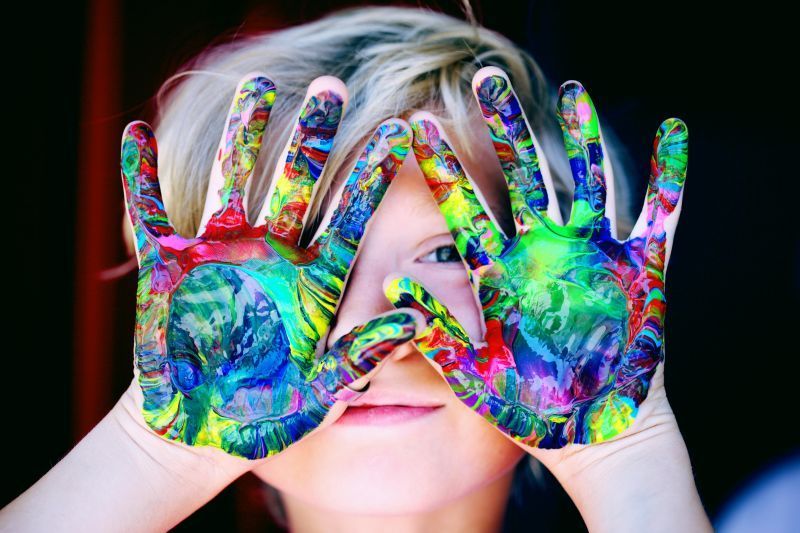
Today, we share stories that will restore your faith in human resilience. Yesterday we explored brain science. Now meet real people whose lives changed when they picked up paintbrushes instead of prescription bottles.John's Breakthrough: Combat Trauma to Canvas Marine veteran John struggled with PTSD after Iraq. Traditional therapy failed. Then he discovered art therapy at University of Kansas. "Art therapy gave me new purpose and helped me face my traumas" Result: 50% reduction in PTSD symptoms within 12 weeks. John now mentors other veterans. Sarah's Journey: Autism to Art Connection 8-year-old Sarah, diagnosed with autism, couldn't communicate emotions verbally. Her parents tried 'Images of Self' art therapy. After 15 sessions: 10 of 12 children showed substantial behavioral improvement. Sarah began initiating conversations and showing empathy through artwork. Portland's Community Miracle: 5,000 Lives Touched When Portland launched Community Healing through Art during pandemic, skeptics questioned spending $240,000 on "just art". Results silenced critics: - 5,000 Portlanders directly served - 87% reported improved mental health after group activities Myissha's Breakthrough African-American combat veteran with brain injury and PTSD found traditional treatments inadequate. Art therapy became her breakthrough. Her brain sculpture helped communicate needs to social workers in ways words couldn't. "I want it to tell my story and speak for my colleagues" The Autism Success That Shocked Researchers 6-year-old boy with autism began weekly art therapy. His drawings showed progression toward object constancy—a milestone doctors thought impossible. 77% of autism art therapy participants show improved psychological health and social skills. Why These Stories Matter These aren't isolated cases. The VA now incorporates art therapy nationwide. Creative Forces Military Healing Arts Network serves thousands. At Portraet, we witness these miracles daily. Our artists don't just create—they heal, inspire, proving creativity isn't luxury—it's medicine transforming lives in ways pills never could.
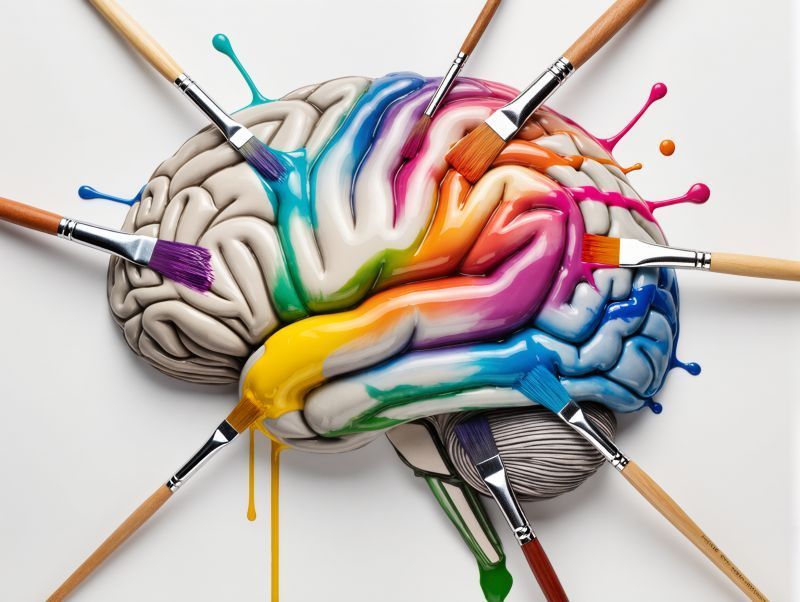
What if I told you that picking up a paintbrush literally rewires your brain in real-time? Yesterday we revealed art therapy's explosive market growth. Today, we dive into the mind-blowing neuroscience proving why it works. Prepare to see creativity in a completely new light. The creativity circuit scientists just discovered: Recent JAMA research mapping 857 participants found creativity activates a specific brain circuit centered on the right frontal pole. When you create art, this circuit doesn't just "light up"—it fundamentally rewires neural pathways, forming connections that didn't exist before. Here's what happens in your brain when you create: 🧠 Default Mode Network strengthens—the same network meditation activates, promoting self-reflection and inner peace ⚡ Executive Control Network balances with creative networks—professional artists show enhanced connectivity between these typically opposing systems 🎨 Neuroplasticity accelerates—art-making stimulates new neural connections 300% faster than passive activities The chemical cocktail of creation: Making art floods your system with dopamine (motivation), serotonin (calm), and oxytocin (connection). Stanford research proves these neurotransmitters work in opposition but harmony—dopamine drives creation while serotonin provides emotional regulation. The structure changes are permanent: 12 weeks of art therapy increased cortical thickness in memory regions while improving working memory in older adults. Parkinson's patients showed improved visual-cognitive skills and enhanced brain connectivity after just 20 art sessions. Professional vs. novice brains reveal shocking differences: Expert artists show creativity correlating with right prefrontal dominance over left. Novices show the opposite pattern. Training literally reorganizes intercortical interactions, with the right prefrontal facilitated while left suppressed. Why this matters for mental health: PTSD patients have lower default mode network connectivity. Art therapy increases DMN connectivity, potentially rebalancing this system. The bilateral brain activation during creation helps process trauma through both cognitive and somatic pathways. At Portraet, we witness these transformations daily. Artists report feeling "different" after creating—and now we know why. Their brains are literally changing, forming new pathways for emotional regulation, stress management, and cognitive flexibility.
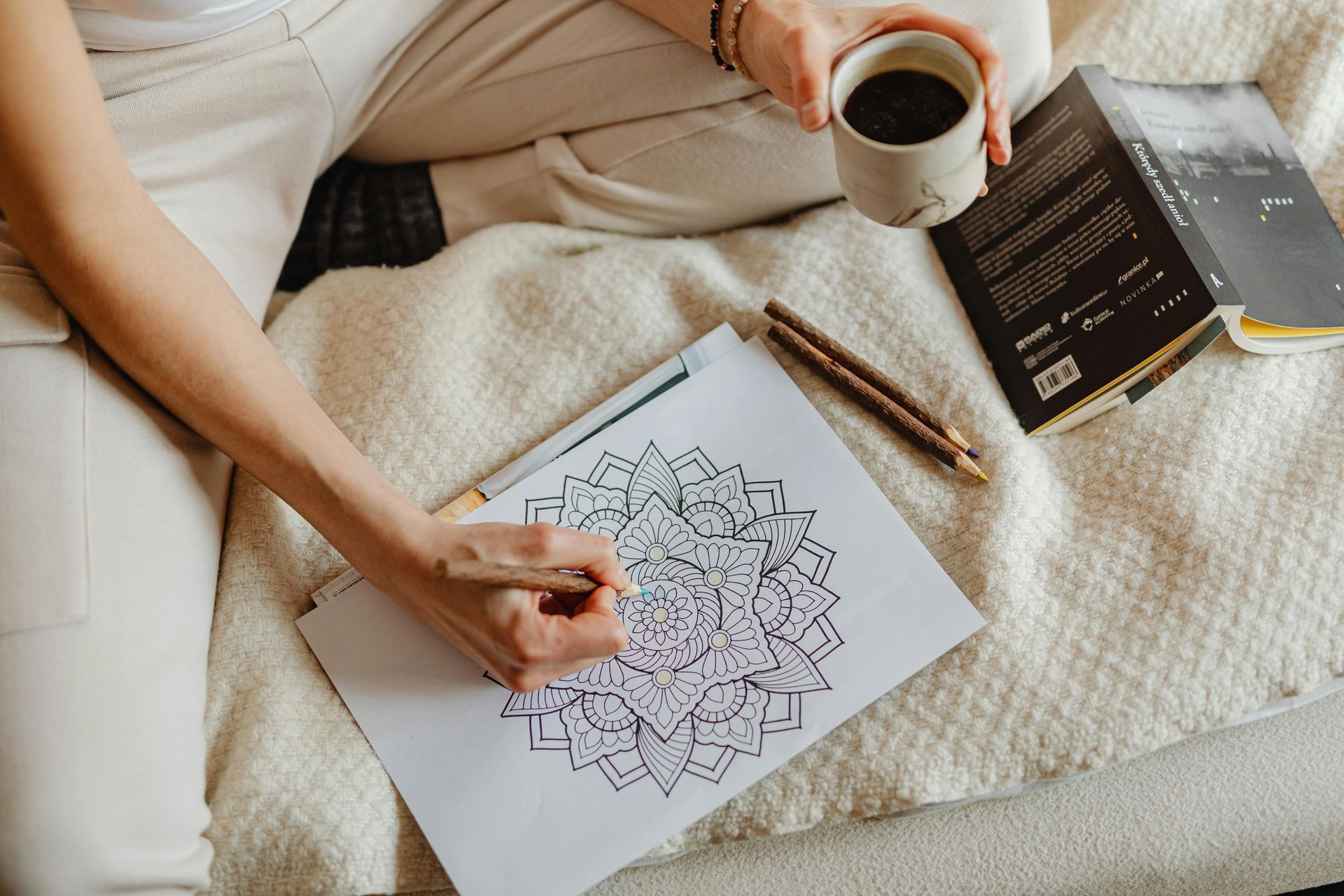
The $562 Million Secret Transforming Mental Health While everyone debates AI solutions, a quiet revolution is rewriting healthcare. The art therapy market exploded from $331M to $562M by 2032—but that's not the shocking part. Here's what will make you rethink healing: 🧠 73% reduction in anxiety/depression through art therapy 🎨 50% decrease in PTSD among veterans using paintbrushes vs pills 💡 77% reported improved psychological health after art sessions The breakthrough that changes everything: Mass General Brigham identified the brain circuit for creativity. When activated through art-making, it literally rewires neural pathways, creating new connections. "Creativity doesn't map to a brain region but to specific circuits" - Dr. Michael Fox Why the market explosion matters: With 1 billion people suffering mental disorders, traditional treatments fail millions. Art therapy offers: no side effects, no addiction, no insurance battles—just profound transformation. The extraordinary results: - 85% reduction in prenatal depression - 71% effectiveness in chronic pain - 34% reduction in cancer patient fatigue - The NeuroArts revolution is here. Scientists prove we're literally wired for art. Creating releases the same neurotransmitters as falling in love or experiencing joy. At Portraet, we witness this daily. Our artists aren't just creating—they're healing, documenting journeys, proving creativity isn't luxury—it's medicine.
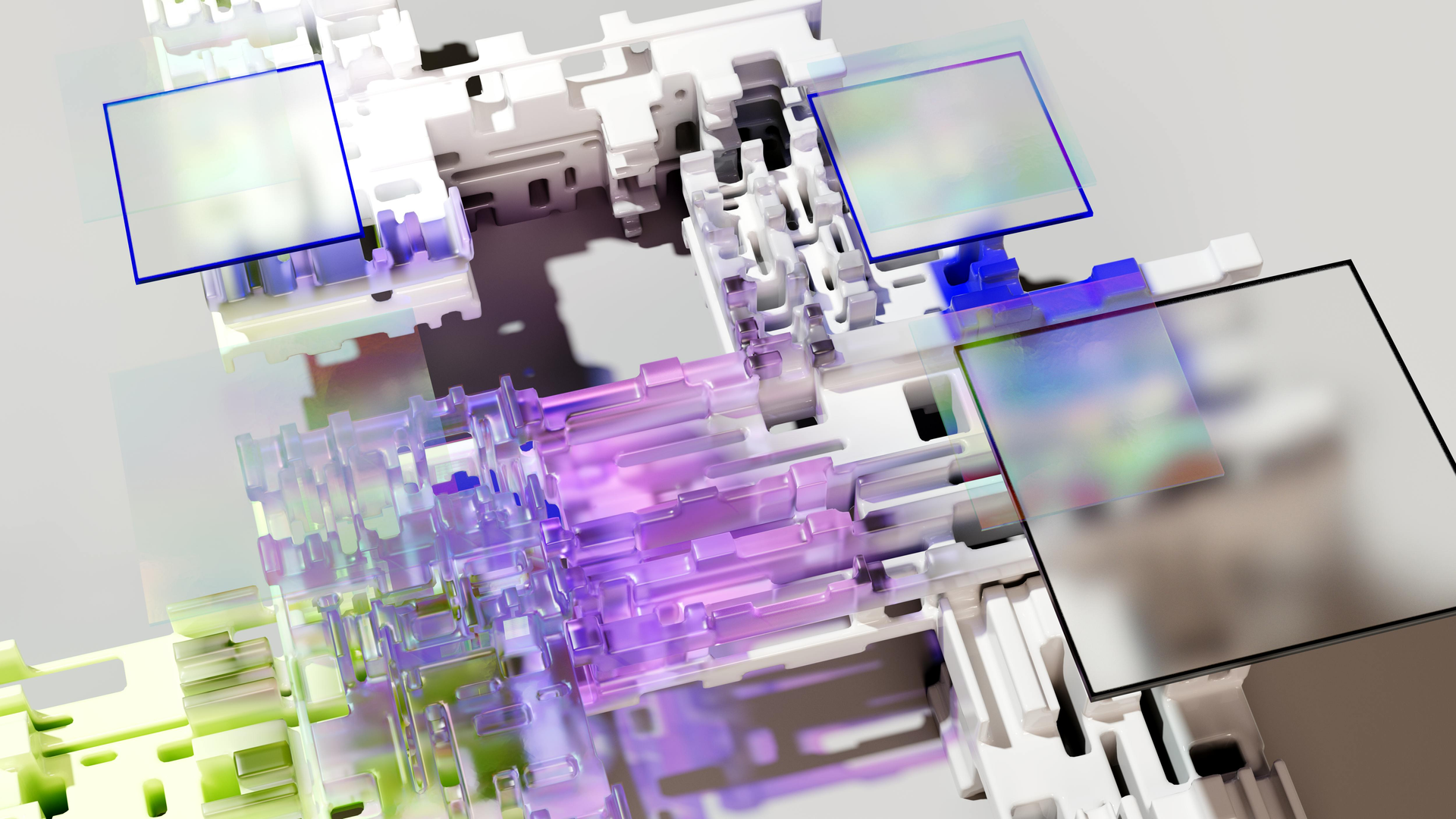
What if we told you some artists are creating art that literally breathes, grows, and lives? While the world debates AI vs. traditional art, a revolutionary movement is quietly rewriting what art can be. Welcome to BioArt—where artists use living bacteria as paint, grow sculptures from mushroom mycelium, and create masterpieces that evolve, reproduce, and transform over time. This isn't science fiction—it's happening right now: 🧬 Living Portraits: Artists paint with E. coli bacteria on agar plates, creating invisible artworks that only reveal their colors after 24-48 hours of incubation. Each piece literally grows before your eyes. 🍄 Breathing Sculptures: Mycelium (mushroom root systems) are being shaped into busts, bowls, and installations that continue growing, releasing spores, and completing entire life cycles as part of the artwork. 🌊 Ocean Art Evolution: Underwater sculptures made from pH-neutral materials become living coral reefs, with marine life colonizing and transforming the art over decades. The mind-blowing reality: These artworks can theoretically last as long as life exists on Earth, provided they remain capable of reproduction. Unlike any art form in history, BioArt pieces change, adapt, and evolve independently of their creators. Eduardo Kac, who coined the term "BioArt" in 1997, created a transgenic rabbit with jellyfish DNA that glows green under blue light. Anna Dumitriu weaves bacterial threads into textiles that tell stories of infectious diseases. Jason deCaires Taylor submerges massive sculptures that become thriving coral ecosystems within months. What makes this movement extraordinary: Unlike traditional art that captures a moment in time, BioArt exists in perpetual transformation. A bacterial painting continues evolving for days. A mycelium sculpture changes texture and releases aromatic compounds. An underwater installation becomes home to thousands of marine species. "Art has the power to change the way we see the world, awakening us to new perspectives" The ethical fascination: BioArt forces us to confront fundamental questions: What is life? Who has the right to manipulate living organisms? Can art be considered "alive"? These pieces don't just hang on walls—they challenge our understanding of existence itself. At Portraet, we're witnessing the future unfold. Artists are submitting portfolios that blur the lines between biology and creativity, between science and art. They're not just making art—they're collaborating with life itself to create something unprecedented in human history. In a world obsessed with digital perfection, the most revolutionary art form might just be the one that grows, breathes, and lives.
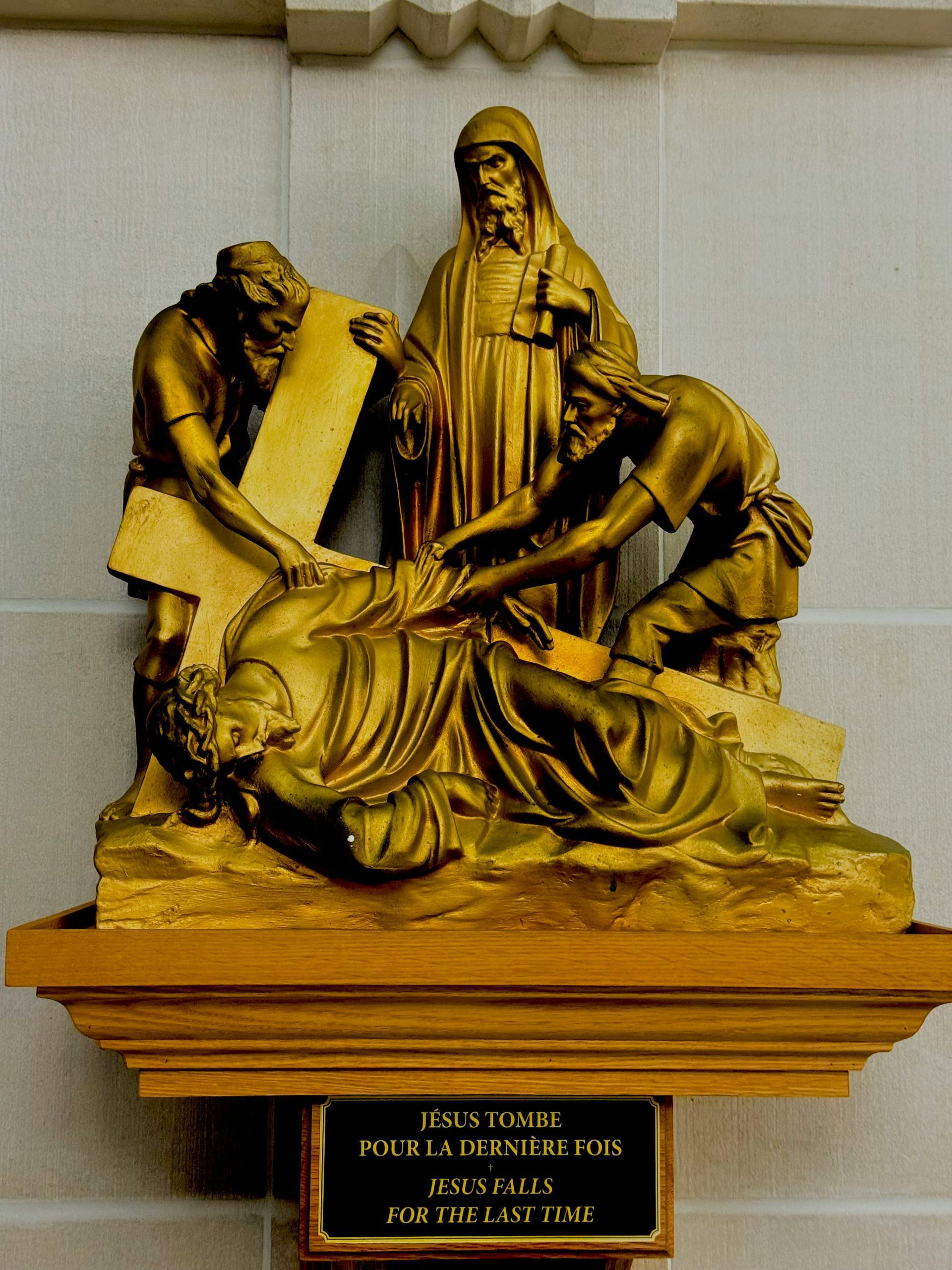
While everyone rushes to create with AI, something extraordinary is happening in studios across the world. Traditional craftsmanship is experiencing its most powerful renaissance in over a century. As digital screens dominate our lives, artists are returning to paintbrushes, carving tools, and kilns—not as a rejection of progress, but as a declaration of irreplaceable human value. The data reveals a fascinating paradox: 📈 Handmade market surge: The global artisan crafts market grew from $718 billion to over $1.2 trillion, while consumers actively seek "authentic" over "automated" 🎨 Digital fatigue drives change: Art schools report 45% increased enrollment in traditional techniques—ceramics, printmaking, oil painting—as artists crave tactile experiences 💡 Premium on provenance: Handcrafted pieces now command 300-500% price premiums over mass-produced equivalents, with buyers specifically seeking the "artisan story". What makes handcrafted art irreplaceable in our digital age: Unlike AI-generated content that anyone can create in seconds, traditional artistry requires years of skill development, intimate material knowledge, and physical mastery that cannot be replicated by algorithms. Each brushstroke carries the artist's unique pressure, each carved line reflects their personal technique. "Art has the power to change the way we see the world, awakening us to new perspectives". The stories reaching us at Portraet exemplify this movement: Artists who left digital careers to rediscover pottery wheels. Painters choosing canvas over tablets specifically because of the unpredictable beauty of oil pigments mixing. Sculptors working with wood because each grain pattern tells a different story. This isn't nostalgia—it's strategic rebellion. In a world where anyone can prompt AI to create images, the ability to skillfully manipulate clay, blend pigments, or carve stone becomes profoundly valuable. These artists aren't rejecting technology; they're asserting the irreplaceable worth of human creativity, patience, and imperfection. The digital paradox we're witnessing: Technology platforms enable artisans to reach global audiences, but the art itself celebrates pre-digital techniques. Instagram showcases hand-thrown pottery, TikTok features time-lapse oil paintings, yet the creations themselves reject digital shortcuts. At Portraet, we're committed to this renaissance. We believe the future belongs to artists who choose difficulty over convenience, authenticity over automation, and human touch over algorithmic perfection. Every portfolio we curate celebrates the irreplaceable value of skilled hands and patient hearts. In an age of instant everything, slow art becomes revolutionary.
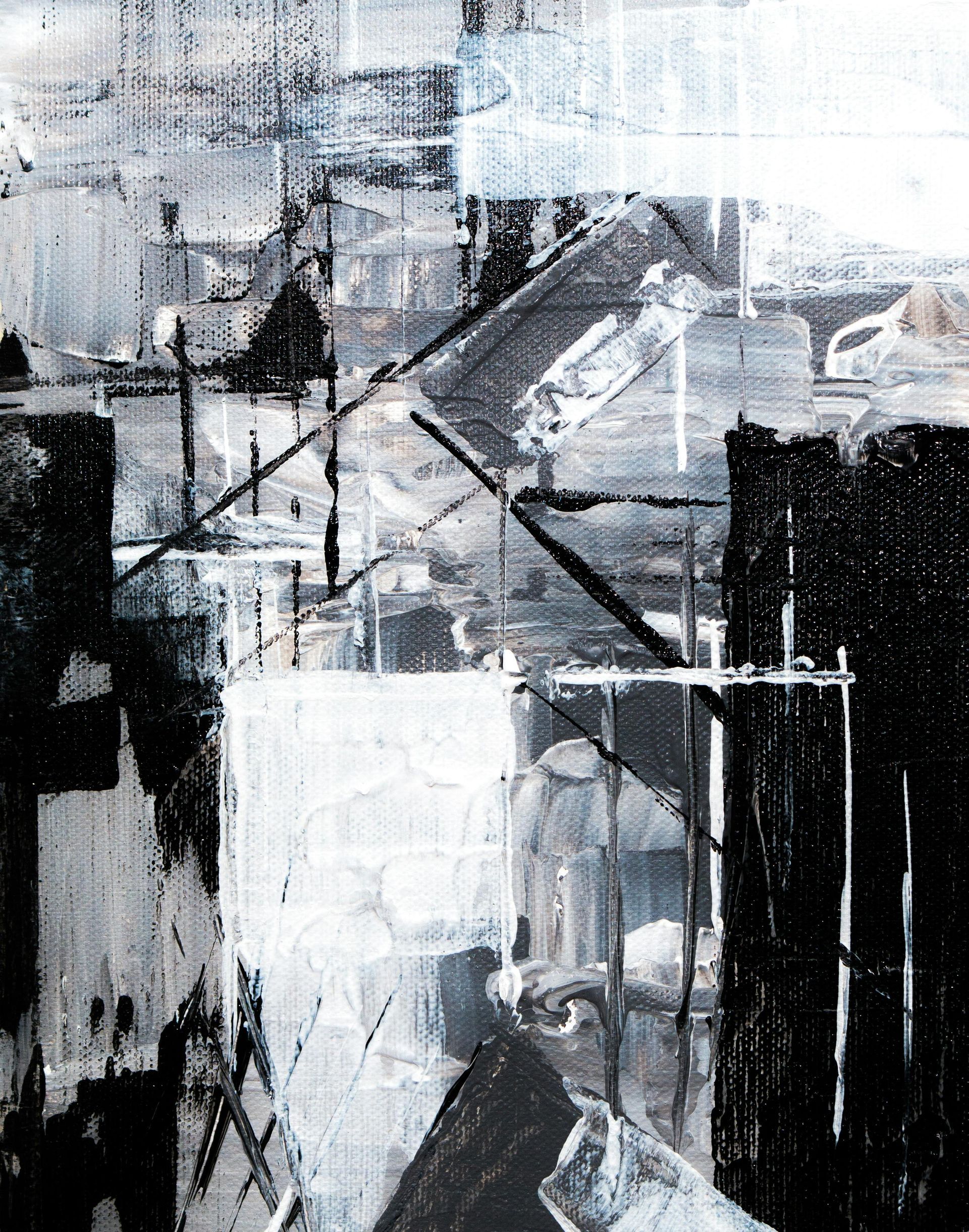
Art isn't just about creating beauty; it's about creating hope. Recently, a portfolio caught our attention not for its technical perfection, but for the profound stories behind each piece. The artist used creativity to navigate through challenging times, turning trauma into triumph with every brushstroke. After reviewing numerous submissions, we've realized that the most impactful art emerges from vulnerability and resilience. Artists transform pain into purpose, showcasing that creativity serves as a bridge between the past and a brighter future. Here are some transformation stories from our community: 🎨 Sofia expressed her anxiety through digital art, inspiring others facing similar struggles. 💡 Ahmed celebrated memory and hope through sculptures born from his experience with loss. 🌟 Layla used art therapy to advocate for mental health awareness, creating a visual diary of her journey. "Art has the power to change our perspectives, awakening us to new ideas and values." At Portraet, we don't just curate art; we amplify voices that heal communities and transform struggles into strength. Each portfolio we review represents someone's courage, story, and hope. We are fascinated by artists who conquer creative fears to become authentic voices, using art not only for self-healing but also to inspire others. The vulnerability in creating meaningful art builds the resilience to impact the world positively. This is the essence of Portraet. We believe in providing artists a platform for their truth, not just their technique. When authentic voices connect with their audience, magic unfolds – communities heal, perspectives evolve, and hearts open. The artists joining us aren't just talented; they are courageous. They have proven that creativity is not just self-expression; it's a catalyst for social change. They remind us that art doesn't just adorn spaces; it transforms them. To every artist out there: Your story, healing, and voice matter.
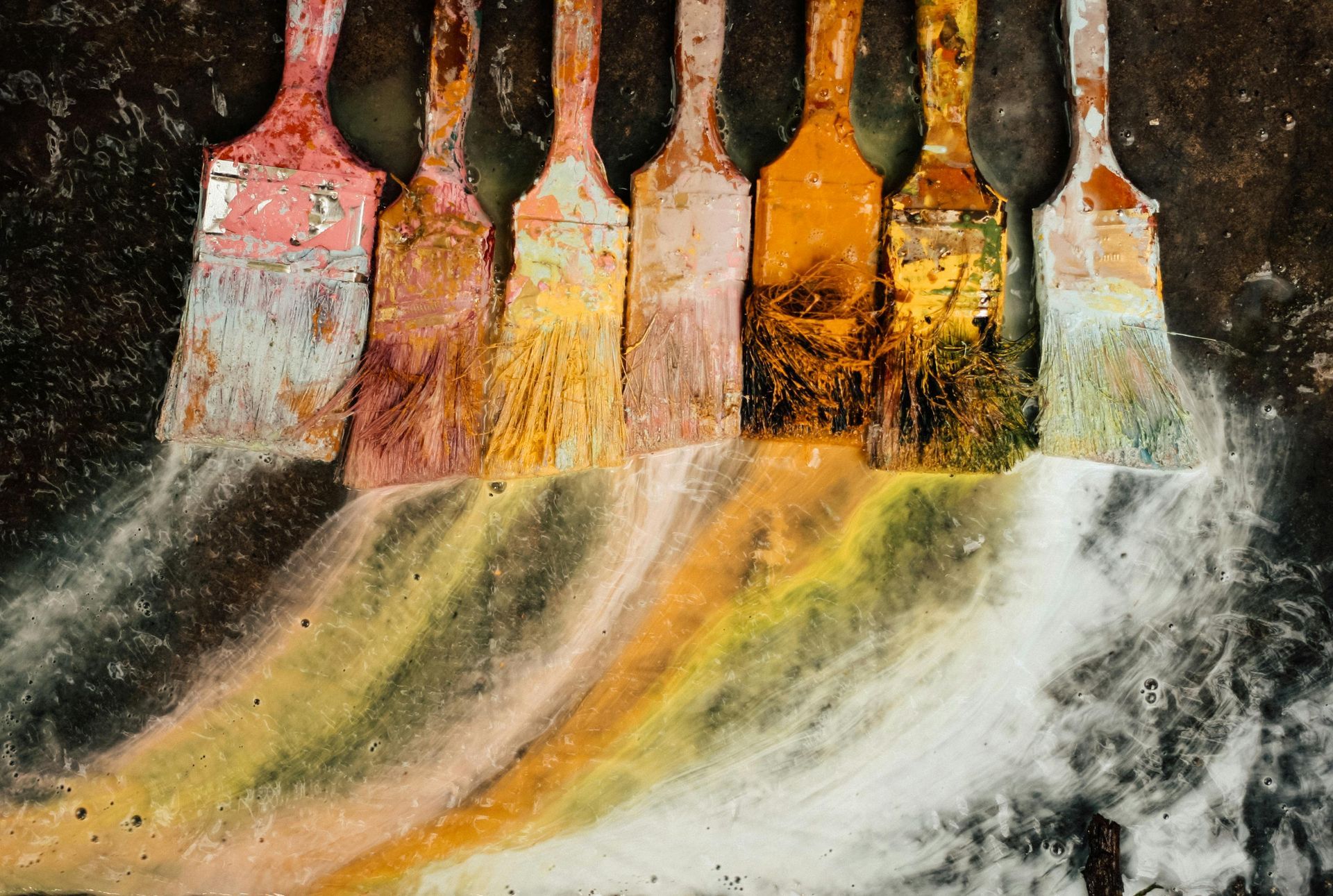
In a world that often glorifies speed and noise, art quietly reminds us that presence lives in the pauses. Between each brushstroke lies a breath — a stillness that gives the work its rhythm, its life, its meaning. We tend to think of art as the result: the finished piece, the colors, the detail. But the process — the waiting, the stepping back, the hesitation before a line — is where truth hides. In painting, silence isn’t empty. It’s loaded with decisions, emotions, and invisible questions. It’s where the artist listens. It’s not so different from life. We rush to fill silence with words, to paint over quiet with distractions. But often, it’s in the unspoken, the unwritten, the unpainted — where the real story begins. Stillness is not lack. It is permission. Permission to rest. To feel. To not know. Next time you see a painting, look closely at what’s not there. The untouched corner. The space between colors. The white around the edges. That’s where the artist left you room to breathe.
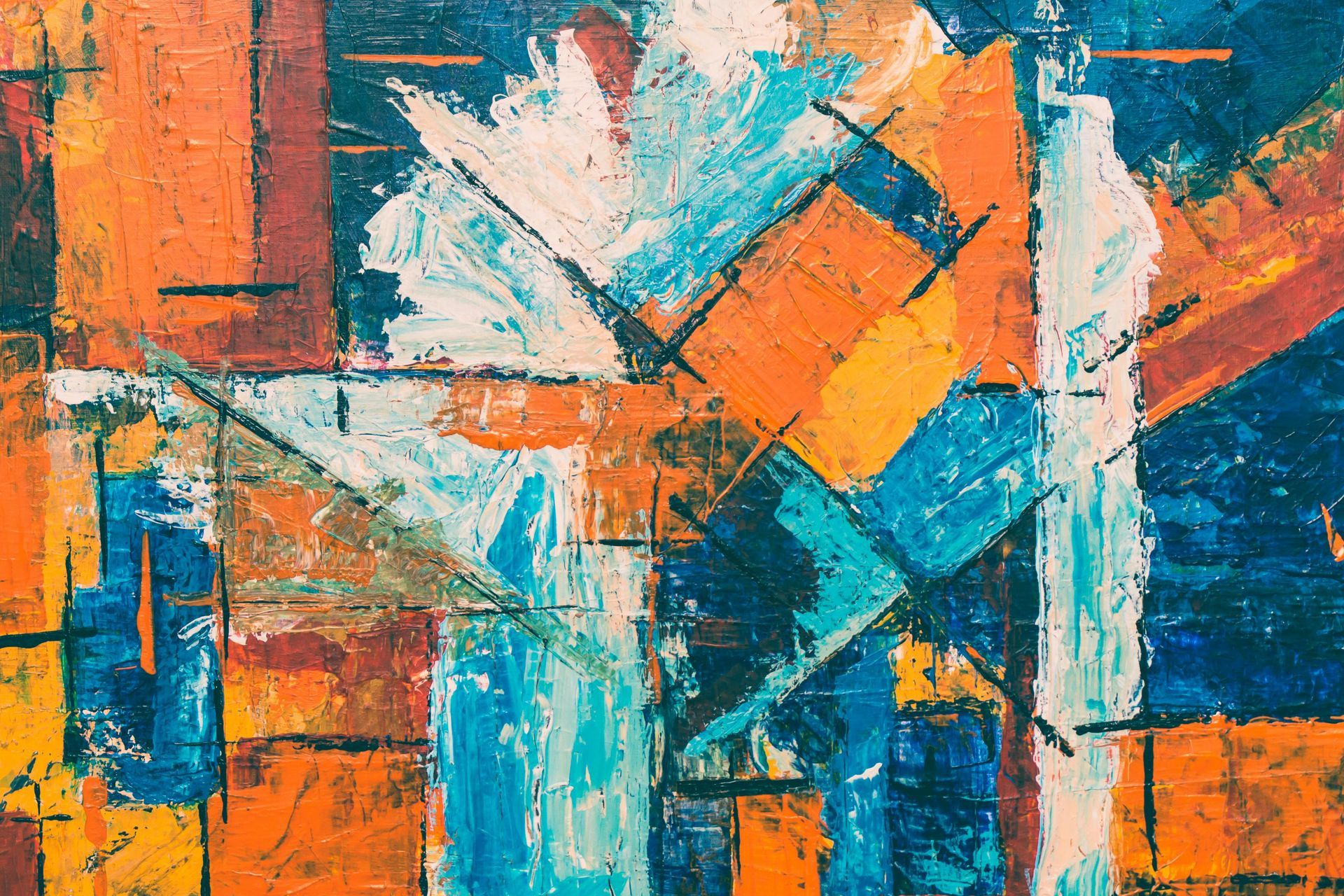
Throughout human history, art has served as a powerful means of communication—long before written language or spoken words. From the earliest cave paintings to contemporary visual storytelling, art has allowed humans to express ideas, emotions, and experiences in ways that transcend verbal language. Early Communication Through Art The origins of artistic expression can be traced back tens of thousands of years to prehistoric times. Early humans used natural pigments to create images on cave walls, depicting animals, hunting scenes, and symbolic handprints. These visual representations were more than mere decoration; they were a vital means of sharing stories, preserving collective memory, and conveying important cultural information. Symbolism and Meaning in Ancient Cultures As civilizations advanced, art became increasingly symbolic and complex. In ancient Egypt, murals and hieroglyphics illustrated religious beliefs and guided souls in the afterlife. Similarly, Byzantine and Medieval Christian art employed icons and symbols to communicate spiritual concepts to largely illiterate populations. Color, form, and gesture all carried specific meanings, creating a visual language accessible to many. Art as Personal and Political Expression Over time, art evolved beyond its religious and cultural functions to become a vehicle for personal expression and social commentary. Artists like Frida Kahlo used their work to explore identity, pain, and resilience, while others like Banksy employ street art to challenge political and social norms. Through imagery, artists convey complex narratives and provoke dialogue without uttering a single word. Contemporary Visual Storytelling Today, art continues to be a universal language. In a digital age dominated by images, photography, film, and social media, visual art reaches global audiences instantly. It remains a profound way to evoke emotion, challenge perceptions, and foster connection across diverse cultures and languages. Art’s silent language speaks volumes. It bypasses barriers of language and culture to communicate what often cannot be said. Whether through a prehistoric cave painting or a modern mural, art remains an essential and enduring form of human expression.